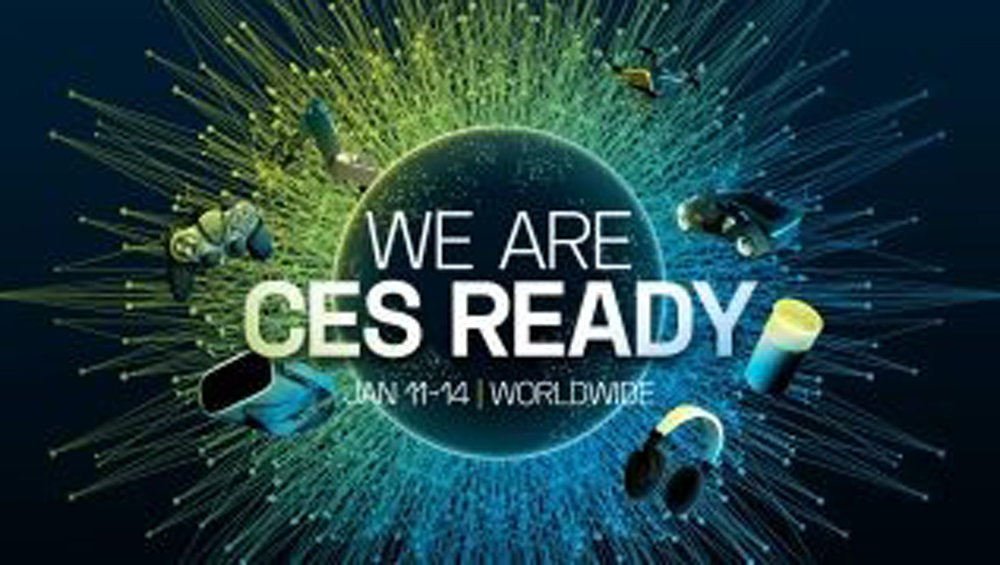
TVN Executive Session | Virtual CES Foreshadows Post-Pandemic Glimpses

 For broadcasters lucky enough to attend it, CES is normally a sugar rush of new consumer tech, marquee-level presentations and deal-making while everyone else is still nursing a post-holiday hangover.
For broadcasters lucky enough to attend it, CES is normally a sugar rush of new consumer tech, marquee-level presentations and deal-making while everyone else is still nursing a post-holiday hangover.
This year, the massive show that normally commandeers the Las Vegas Strip has been booted to COVID-necessary virtualization. That has left its usual 200,000-odd attendees bereft of the spectacle of autonomous cars, undulating walls of 8K TVs and a vision of what the next year will look like in consumer tech.
Shelly Palmer, a veteran consultant and CEO of The Palmer Group, which organizes bespoke tours for executives of can’t-miss elements of the show, isn’t despairing the show’s virtualization. It has forced his own company to reimagine how it introduces executive clients to emerging technologies and facilitates the kinds of serendipities they find at major live events.
In an interview with TVNewsCheck Editor Michael Depp, Palmer highlights the major tech most relevant to broadcasters this year, including smart TVs and better, cheaper tools for home video production. He dismisses NextGen TV, which had planted the flag at last year’s CES, as too late to a consumer landscape indifferent to it. And he says even on the other side of COVID, the trade show landscape will be forever changed with ROI determining which ones survive.
An edited transcript.
You have been leading executive tours of CES for years, helping people cut through the enormous noise of the show to find the signals that are most relevant for them. How does that process change now that the show has been virtualized?
Adapt or die. We were told early on that [the coronavirus] was going to be a massive problem. I said to my team let’s pretend that we are inventing this product for the first time. There is no trade show. Our job is what is new, what is next and what does it mean for your business for leadership teams?
The first thing we thought of was we build our own invitation-only social network. It’s called PGX.tech, and 3,000 people have joined. The next thing is we are not getting the serendipity you get bumping into people at trade shows, so we built these salons that we do eight times a week. People show up, it is 20 minutes long — three minutes of plenary introduction, we put them in breakout rooms and then we bring everybody back to say goodbye, like a water cooler conversation. You meet new people, bump into old friends, learn a little, teach a little.
We had an unbelievable opportunity with the tours. We contacted every manufacturer that we had ever included on a tour stop. Now we are not limited to who is coming to the show, so we can include Apple, Microsoft, Intel, Qualcomm. We are going to start doing it quarterly.
The leadership team will be in the equivalent of a Zoom meeting. Their rank and file will be able to watch through a webinar tool that is basically view-only and chat as opposed to ask questions, but the leadership teams can ask questions. We will be able to use a combination of prerecorded B-roll and live tour guiding.
When they are done, it is recorded so everyone in their organization can see how the senior leaders have reacted to what they have seen. It sparks debate and helps to communicate strategy across the organization.
What should broadcast executives be homing in on for the virtual CES this year? What would be the key parts of the show for a CTO, for instance?
Security, workflow and deal making are the three things you would normally do at CES if you are a CTO in the television business. Everybody has got a streaming service now. [Most recently] is the debut of Discovery+. For $18 a month, you can get 90-plus percent of a $50 basic cable package over the top. On Comcast basic cable it is the same package for $50, and the over-the-top version is better because if you have a 4K set you can see it in 4K, which you can’t do over Comcast set-top boxes. That is the shift that is happening.
What tools are likely to empower consumers? This year they will be showing off 8K sets. What that means is that the 4K sets are going to be dirt cheap and anybody that wants to be in the 4K business can be. The other thing you are going to be seeing at CES is while Samsung has 23% of the TV business, the other 77% are Chinese companies. This stuff is really well made. What does that mean? Consumers have choices.
Then there is workflow, a lot of the stuff that you see in South Hall normally. What I mean by that is getting the video from here to there and also UX/UI. There is a lot to be learned there and a lot of improvement still possible.
The pandemic catalyzed major shifts in consumer behavior in 2020. How are we going to see that translated into the consumer electronics marketplace this year?
I don’t know that it will be in evidence, but it was one of the most robust years for home studio equipment. In order to stream you need just a smartphone, but many people have taken it a step further. Webcams have been variously in and out of stock. There is a lot of very inexpensive webcam gear. There will be a ton of home office equipment. The price competition for high-end lighting, high-end audio and the cameras themselves is insanely fierce because the demand is so great. There is a lot of that going to be at the virtual CES.
You will see autonomous vehicles on display. Are they as important virtually as they were in person? That is for attendees to determine.
The streaming market has metastasized over the past nine months. How is that going to bear out in the smart TV landscape?
You don’t need a Roku or Fire TV if your TV is smart enough. Most TVs are not, so those are going to end up being retrofit tools. The smart money is on [a company] like Samsung, where they are putting as much as they can into the set itself. All the TV manufacturers are going to need to do a better job or they will be abdicating that to Amazon and Roku. That fight is going to be fought. If you look at Sony, Vizio, Samsung and LG, the newer models all do a decent job of downloading apps.
The manufacturers are going to have to differentiate themselves by making this simple and easy to use. The beauty of having smart TVs is there is one remote and it is obvious. Hit the home button, there are the apps. Samsung has done a really nice job of putting all that together, so there is a chance for these guys to differentiate themselves.
There has been a drop off in mobile usage with so many people now working from home and people less tethered to their mobile devices. What are the ramifications for developments in the smartphone market?
5G doesn’t mean anything to you if you are in your house. You have Wi-Fi, which is faster than 5G is going to be. Mobile usage in general is down because no one is going anywhere. The conventional, epidemiological wisdom is that this thing is going to start to abate somewhere around Q4 of ’21 between the vaccine, therapeutics and herd immunity, so towards the end of this year we should start to see the light at the end of the tunnel. If that is true, then we should see all this snap back. The minute that I start traveling, I don’t go anywhere without my phone.
The big thing just over the horizon is properly-interfaced mixed reality, where there is some augmentation to what you are doing, and it is processed locally and through high-speed, low-latency broadband like 5G. It is just not here yet, and we are not going to see big changes in the world of mobile until we see that.
NextGen TV planted its flag at CES and tried to raise consumer awareness there. What, if any, opportunity does CES present for that technology this year?
It is too little, too late. I don’t think ATSC 3.0 ever matters. The reason I am saying that is because my TV is not a toolset with which I wish to interact. That ship has sailed. I have a tablet, a smartphone, a laptop if I want that.
The idea that you are going to somehow make commercials more targetable and therefore more valuable is patently wrong. I don’t know of an advertiser that can customize their creative in an appropriate number of ways for the existing segmentation of television. This is what no one will talk about because they are so excited about the technology of ATSC 3.0 — they won’t acknowledge the fact that an advertiser will not spend an extra $500,000 to make a second commercial appropriate to run on WE and on Lifetime and a different commercial for ESPN and the sports networks and a different commercial for the news networks. You are telling me that the ability to segment the audience tighter than [now] is going to have a value to someone running the same creative across all channels now? Stop it.
There is no other value of ATSC 3.0 other than pulling back the data from the viewer and turning that data into action. I can get that data in other places. It is a solution in search of a problem. I have been in this business for 40 years, and the problem doesn’t exist.
Let’s talk about trade shows. CES’s in-person show is the latest casualty in nine months of virtualizing industry shows. How do you see the landscape for events like this changing as we slowly climb out of the pandemic?
Trade shows had gotten beyond ridiculous. There are too many of them, and the big ones were too big and the small ones too small. There was nothing in the middle.
The evolution of the trade show business is going to follow a really obvious path. The very biggest will survive. They will be smaller because now everyone is going to need a demonstrable ROI to go. We have learned to do alternative things with respect to knowledge transfer and education, so they will be less important for that.
The most important thing about a trade show is there is no substitute for human, social interaction. That is the power of trade shows and that is the part that you are going to see come back, but it is going to be changed. Big business has changed. The number of people has changed. Big corporations, the very biggest of the global multinationals, have dramatically adjusted how their workforces are employed. There are far more fulltime employees from third-party companies. They are not sending those people to trade shows.
What are the executives going to do? You are going to see a lot of conferences that are very specialized, a lot more retreats. We are going to all be challenged to deliver real value to the attendees. The online thing will keep happening, but there is nothing like getting together with your friends and colleagues. I don’t see how that doesn’t come back, but I wouldn’t look for it this week. I wouldn’t look for it next year, either.
Veteran consultant Shelly Palmer says smart TVs will take a leap forward, smartphone tech will pause until post-pandemic mobility returns and huge trade shows like next week's CES will never be the same again. Click To Tweet































Comments (0)